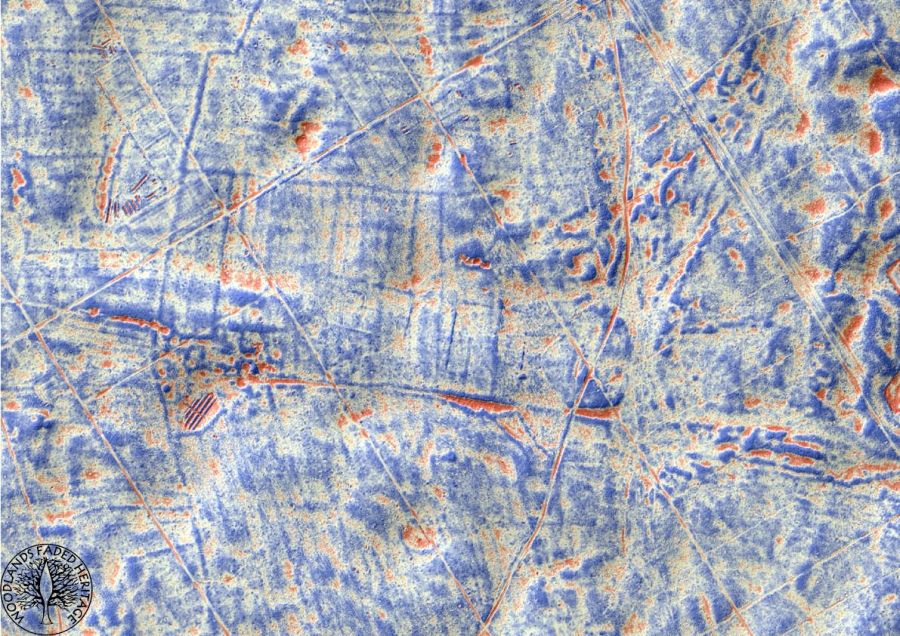
Two PhD students in archaeology - Mateusz Sosnowski (Institute of Archaeology, Nicolaus Copernicus University in Toruń) and Jerzy Czerniec (Institute of Archaeology and Ethnology, Polish Academy of Sciences, NCU graduate) - made an extraordinary discovery in the Tuchola Forest. Thanks to the use of innovative methods of spatial analysis of the Digital Terrain Model, they were able to observe relics of a human settlement, preserved on the surface of the forest, dating from about 2 thousand years ago.
Until now, the forested spaces of the Tuchola Forest have appeared to archaeologists as an area seemingly devoid of traces of human presence in the times preceding the colonisation of these areas in the Middle Ages. It may turn out that thanks to the unexpected discovery of the two young scientists, it will be necessary to verify this state of knowledge, as the PhD students at the Institute of Archaeology of the Nicolaus Copernicus University in Toruń and the Institute of Archaeology and Ethnology of the Polish Academy of Sciences discovered a forgotten 2 thousand-year-old human settlement. The uniqueness of this discovery is even greater because the young scientists have most likely managed to register the complete spatial arrangement of the human settlement, visible on the surface of the earth.
"Thanks to the application of innovative methods of the Digital Terrain Model analysis, we managed to register the complete spatial layout of the human settlement, where we are able to indicate relics of arable fields, the space where the life of the hamlet took place and, what is most interesting, it is very likely that also we managed to capture structures that may be a preserved grid of roads connecting the discovered settlement with other human settlements." -says Jerzy Czerniec.
At first, the researchers suspected that they were dealing with a settlement of medieval chronology, which would fit into the settlement structure of the area, where the settlement from that period dominates. However, in the course of analyses of the available historical sources, both written and cartographic ones, the thesis of such a metric for a targeted settlement seemed less and less likely.
"Our surprise grew with every source that we analysed in search of any mention of our forgotten settlement. Each of them lacked evidence" - recalls Mateusz Sosnowski.
The results of the survey excavations carried out last autumn, in the location selected by the researchers as the area of the human settlement, exceeded the boldest expectations of scientists - "We managed to register traces of settlement from nearly 2 thousand years ago. In addition to stratifications and relics related directly to the place where people lived, in the first centuries of our era, we also came across a single cremation grave, which was buried in the earlier deposits associated with the settlement. It is striking that the grave was most probably covered with a barrow made of material gathered around it, as evidenced by traces visible on the Digital Terrain Model and a large number of pottery and other relics from the settlement, found inside the burial mound." - relates Mateusz Sosnowski. It should be mentioned that during the excavation and surface surveys in the area of the discovered settlement, scientists have found relics whose collection closes in one chronological span, in the Roman Iron Age period, which can clearly indicate the origin of this human settlement.
Scientists are waiting for the results of a number of analyses and dating, to which samples taken during the excavations were subjected. Two PhD students managed to involve a wide group of specialists from various fields of science, including three researchers from NCU in Toruń, these are: dr hab. Agnieszka M. Noryśkiewicz - Adjunct in the Laboratory of the Reconstruction of the Natural Environment in the Institute of Archaeology, NCU in Toruń (providing palynological analysis); dr hab. Michał Jankowski, prof. UMK - Head of the Department of Soil Science and Landscape in the Faculty of Earth Sciences, NCU in Toruń (providing soil and paleopedological analysis) and dr hab. Tomasz Kawalkowski, prof. UMK - Assosciate Professor at Faculty of Chemistry, NCU Toruń, specialist in environmental chemistry (providing trace analysis in environmental samples). The young scientists emphasise the importance of the discovery "If everything is confirmed, the discovered hamlet will be probably the only completely preserved and visible on the surface of the earth, prehistoric human settlement existing throughout Europe!". For archaeologists, the most important challenge now is the indisputable confirmation of the chronology of their discovery and the collection of funds for further research.
"Such a unique place deserves special attention and protection. The first comparison that we have, in connection with this discovery, is that we have most likely managed to find a human settlement, which in its degree of preservation can be compared to the well-known Biskupin. However; as far as Biskupin is concerned, it is located under the water of a lake, in an environment that is definitely more friendly to preserve the traces of the human past. In the case of a settlement from Bory Tucholskie, it is preserved on the surface of the earth only thanks to the fact that it has been hidden under the forest cover for centuries. Thanks to this, we managed to register its subtle spatial forms, such as the layout of fields or road remains "- the scientists conclude.

 ul. Bojarskiego 1, 87-100 Toruń
ul. Bojarskiego 1, 87-100 Toruń